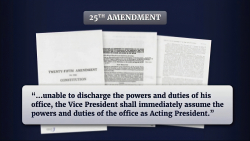Arguably the most distinctive feature of the A-6 was its side-by-side cockpit configuration, which of course was quite uncommon for military aircraft.
The A-6 Intruder was not regarded for its aesthetic appeal or performance specifications. But for three decades, the A-6 was arguably the U.S. Navy’s best option for deep strike missions, thanks to the ability to fly low, fly far, and deliver ordnance with exceptional accuracy.
Developed during the Cold War, the A-6 was built to give the Navy an all-weather attack option. Capable of delivering its payload day or night, under any conditions, the A-6 earned a reputation as a reliable workhorse, who is best remembered for her contributions to the Vietnam War. But the A-6 served through the 1980s and through Desert Storm, making her an enduring example of Cold War craftsmanship.
The A-6 was not elegant or sleek—certainly not in comparison to contemporary aircraft like the F-4 Phantom. But the A-6’s robust build served a purpose: to survive under any conditions. The A-6’s wide and robust fuselage featured a somewhat boxy midsection and a rounded, bulbous nose. The frame is visibly solid and compact—which speaks to the designer’s emphasis on structural strength over aerodynamic resilience.
And the A-6 was extremely tough. With rugged skin panels, prominent access hatches, and external seams, the plane could take a beating.
Arguably the most distinctive feature of the A-6, however, is the side-by-side cockpit configuration, which of course was quite uncommon for military aircraft. The cockpit layout is part of why the A-6 had such a wide, flat-faced profile. The pilot sat on the left, while the bombardier/navigator (BN) sat on the right. This arrangement enhanced crew coordination at the cost of conventional cosmetic appeal. But the arrangement was highly functional; the large, framed canopy provided phenomenal visibility, and although the aircraft lacked fly-by-wire finesse, it was nonetheless relatively maneuverable.
The A-6 featured high-mounted, straight-edged, and long wings. The anhedral (downward) angle was pronounced, which lent the aircraft a drooping, hunched appearance on the ground. The design was excellent for low-speed stability and load-carrying capacity, however—two aspects that were essential for carrier landings and flying at treetop level during ground attack runs.
For propulsion, the A-6 relied on two Pratt & Whitney J52 turbojets mounted inside the fuselage. The engine intakes were large, nearly rectangular, and located just behind the cockpit. The exhaust nozzles protrude slightly from the tail, which featured a conventional single vertical stabilizer and no horizontal stabilizers.
The A-6 was capable of 651 miles per hour, but typically cruised around 500 miles per hour. The aircraft’s total range was 1,150 miles. The service ceiling was 42,400 feet, but the rate of climb—only 7,620 feet per minute—meant that getting to altitude took some time.
By the time the A-6 was retired in 1997, most of the airframes had been in service for a quarter century and were suffering from high fatigue. Cracks, corrosion, and structural issues were becoming increasingly difficult to repair. And given the shift to multi-role platforms, like the F/A-18, the Navy determined it was time to let the A-6 go.
About the Author: Harrison Kass
Harrison Kass is a senior defense and national security writer with over 1,000 total pieces on issues involving global affairs. An attorney, pilot, guitarist, and minor pro hockey player, Harrison joined the US Air Force as a Pilot Trainee but was medically discharged. Harrison holds a BA from Lake Forest College, a JD from the University of Oregon, and an MA from New York University. Harrison listens to Dokken.
Image: Wikimedia Commons.


















